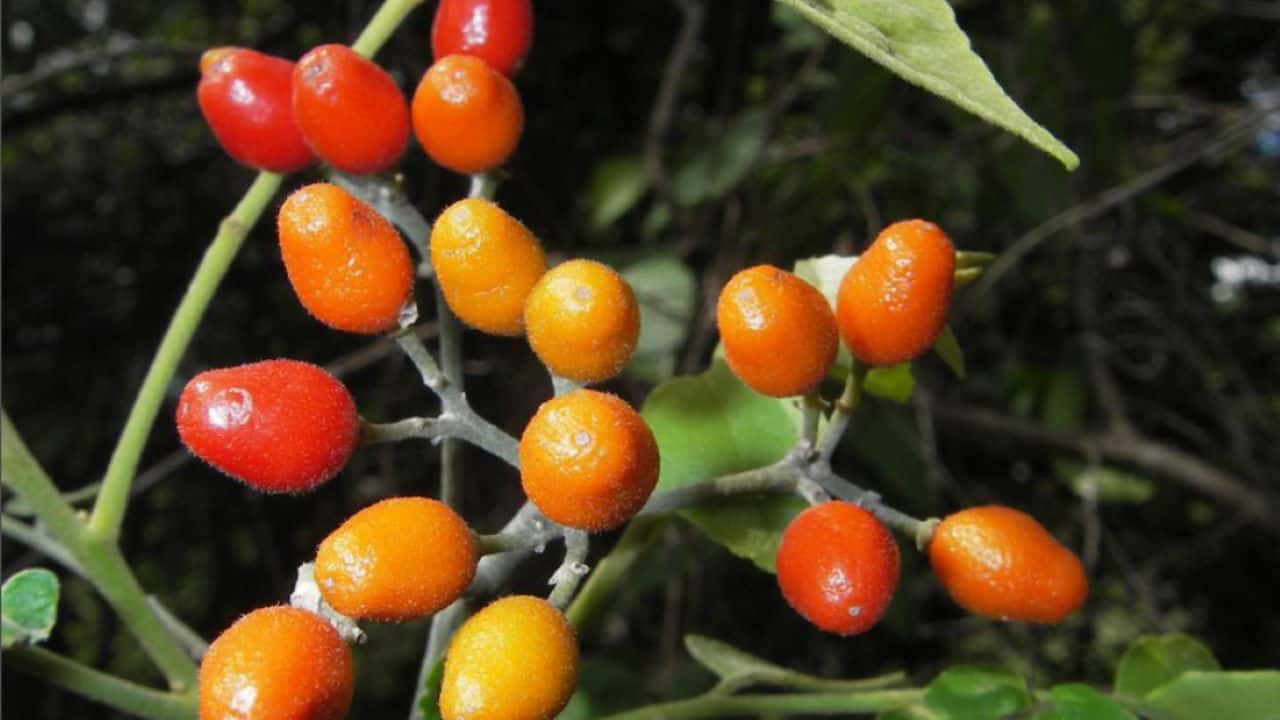Lime Berry
Micromelum minutum
Lime Berry is a small, sour edible berry in the Rutaceae (Citrus) family. This species can be found across Southeast Asia going by local names in different regions, with a variety of traditional uses in food, medicine, topical remedies, and household applications. In Australia, the Lime Berry occurs naturally near-coastal parts of northern Australia extending as far south along the east coast as northern New South Wales.
The fruits of the Lime Berry are ellipsoid in shape and only grow to about 1cm long. Though they look like miniature kumquats or Calamansi limes, they bear a thin berry-like skin rather than a pithy rind, and contain only one seed inside. Once ripe, these sour berries may be enjoyed fresh, cooked or preserved. The roots, shoots, leaves and bark have long been used in traditional medicine across Australia, Fiji, the Philippines, Malaysia and Indo-China to help with skin irritations, fever, gastrointestinal upsets, toothache, headaches, coughs, and more.
Lime Berry flowers are small and white in appearance, blooming in fragrant clusters throughout the year in tropical regions, and from mid-Spring in temperate regions. The flowers are particularly attractive to butterflies. Fruits start out a pale yellow when young, ripening to a pink or orange-red colour after just a few weeks.
This plant prefers full sun or part shade, well-drained soil, plenty of water, and long stretches of warm weather. A true tropical species, it won’t tolerate frosts at all. Gardeners in colder areas wishing to grow this shrub should consider keeping it in a medium-to-large pot (at least 30cm in diameter) in a hothouse or inside the home with a grow lamp over winter.
Lime Berry grows slowly, and generally keeping between 2 and 4 metres in height. This dense, bushy native shrub will suit corners, empty spaces, and edible hedges and screens.
Aboriginal name:
- Dilminyin (Yolgnu Matha)
- Kimiar margibur (Meriam)
When should I prune my Lime Berry?
You shouldn’t have to prune your Lime Berry very often, as this species tends to grow slowly. In tropical regions, you can get away with pruning your tree as needed, however in temperate areas, we recommend saving the task for between late Winter and early Spring, just before the warmer weather hits.
What are the little bumps on my Lime Berry leaves and branches?
If those bumps are visible in large clusters on the younger, growing parts of your plant, it’s most likely a scale infestation, which may also indicate a nearby ant colony. You can treat scale with horticultural oil (pest oil, neem oil, white oil), plus regular pruning to give these insects fewer places to hide, and by controlling the ants.
When should I fertilise my Lime Berry tree?
In tropical regions where the plant grows year-round, lightly fertilise your plant once every three months. In temperate regions, apply a slow-release fertiliser at the start of Spring.
Why is my Lime Berry not producing flowers or fruit?
Your plant may not be getting enough sunlight in its current spot; try shifting it to a sunnier position or moving shade objects to allow more light through. If you fertilise your soil, switch to a fertiliser with a lower nitrogen (N) percentage.

Suitable for full-sun

Suitable for part-shade

Suitable for pots

Dimensions:
Height 2-4m
Width 2m

Tolerates sandy soils

Fruits from:
Year 2 onwards

Bird attracting

Attracts bees & insects

Suitable for gaps

Suitable for hedging/screening

